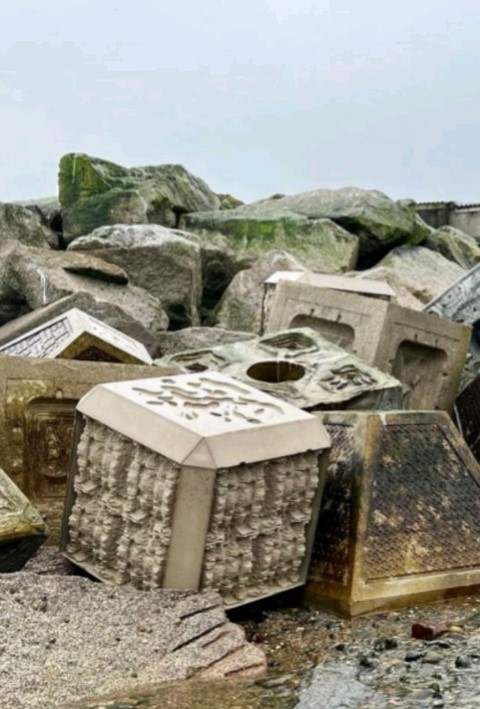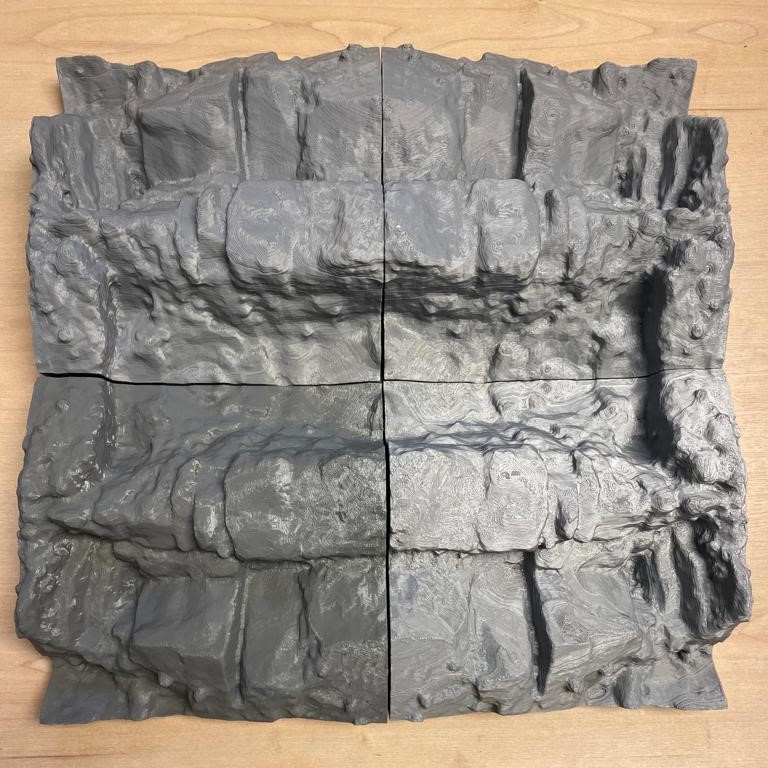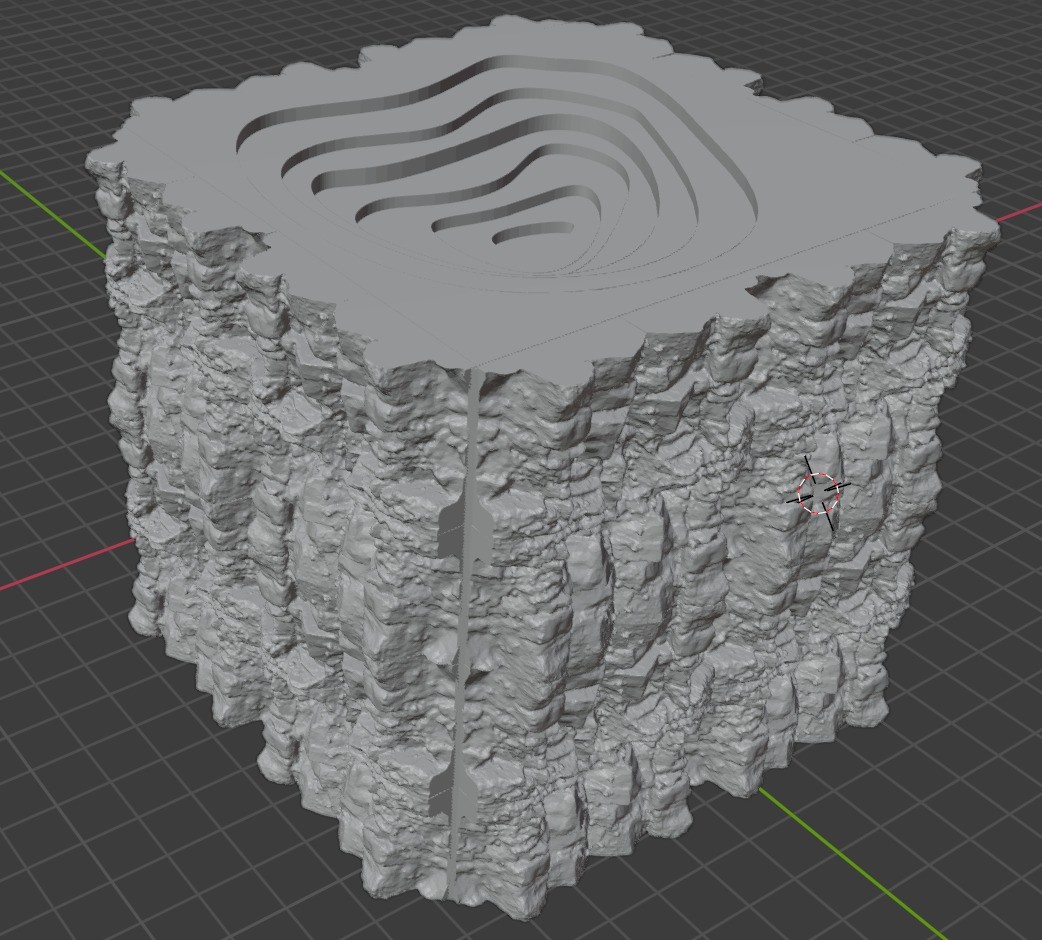The Ecostructure research project shed light on successful surface textures in natural environments, notably the Ringaskiddy texture, named after its discovery location. This texture was replicated in concrete and tested across diverse sites, demonstrating colonisation by a variety of shore species.
BlueCube undertook the challenge of upscaling the formliner to facilitate the production of larger eco-engineering units. Given the intricate structure, adjustments were made to the original pattern, necessitating the creation of new master forms.
Concrete cubes were precast by JP Concrete, for example for the Newlyn project in Cornwall. Eco-blocks were placed along the seafront for an environmental trial, forming part of the Environment Agency’s exploration into novel coastal armor designs doubling as marine habitats. These 88 blocks on the rock armor breakwater contribute to the study of biodiversity enhancement and resilience in high-energy settings, encompassing factors like block size and orientation.




